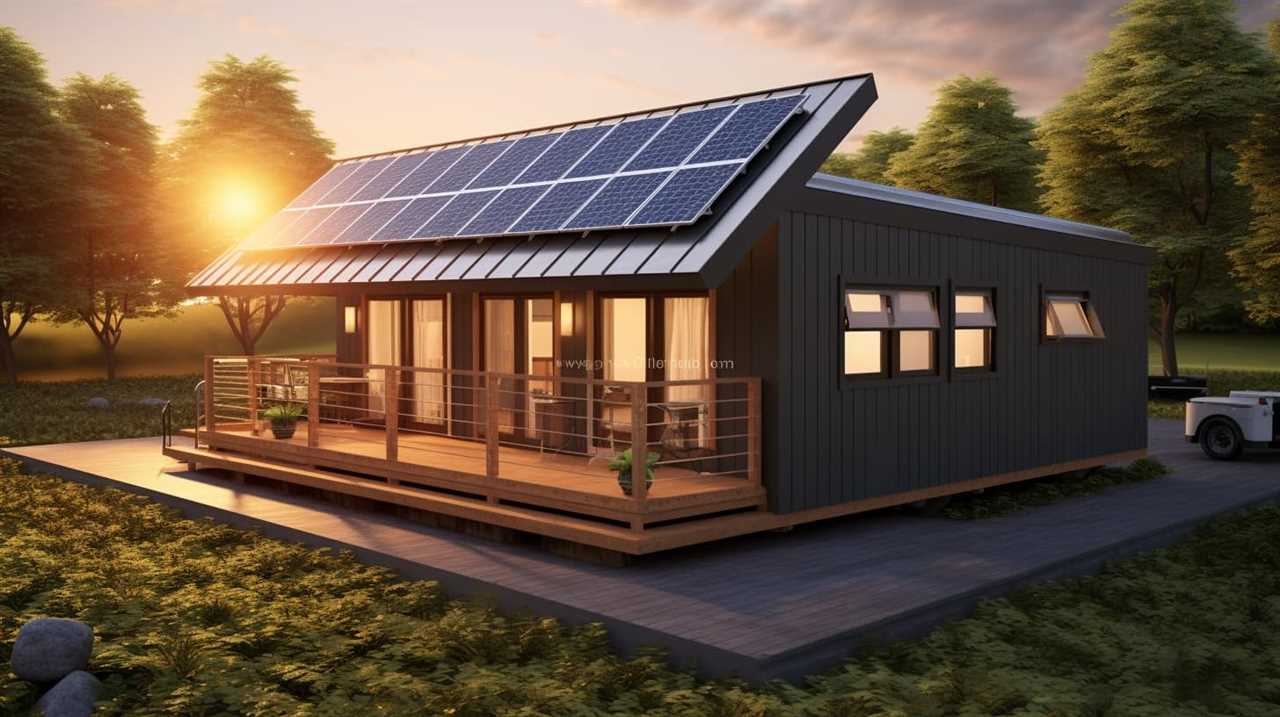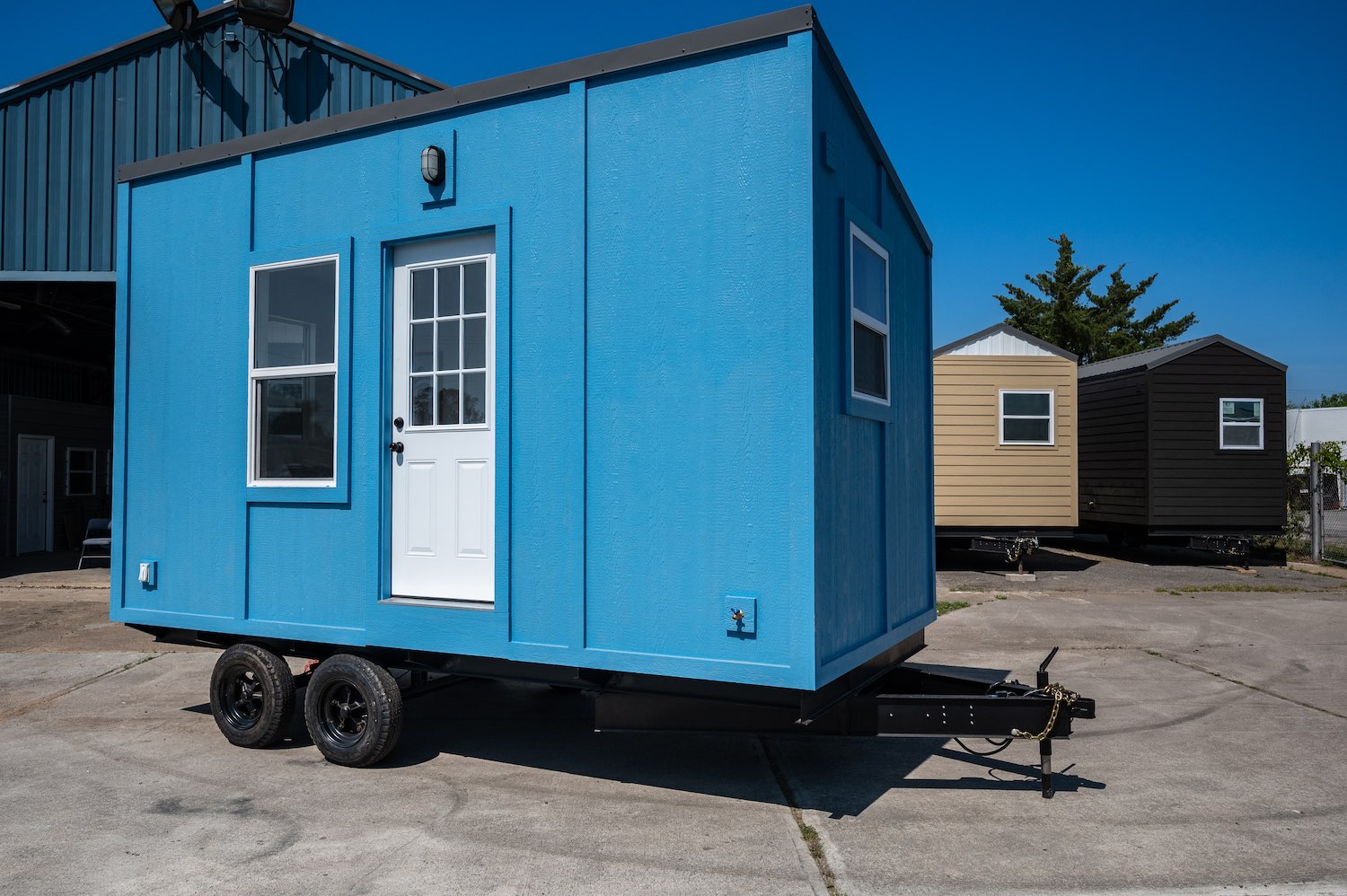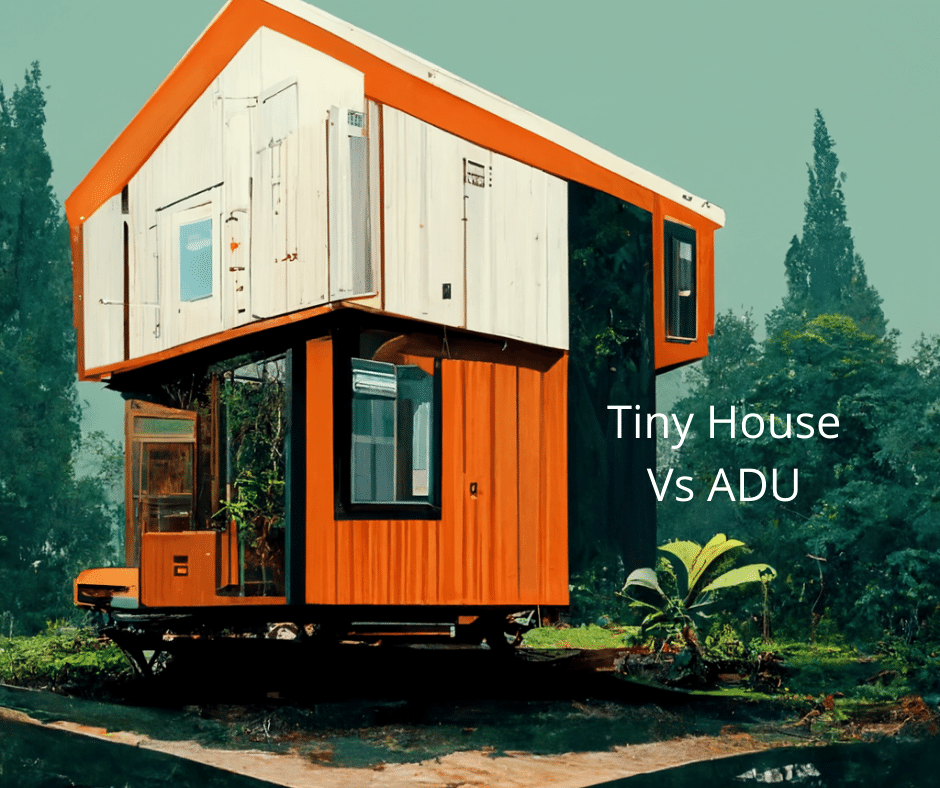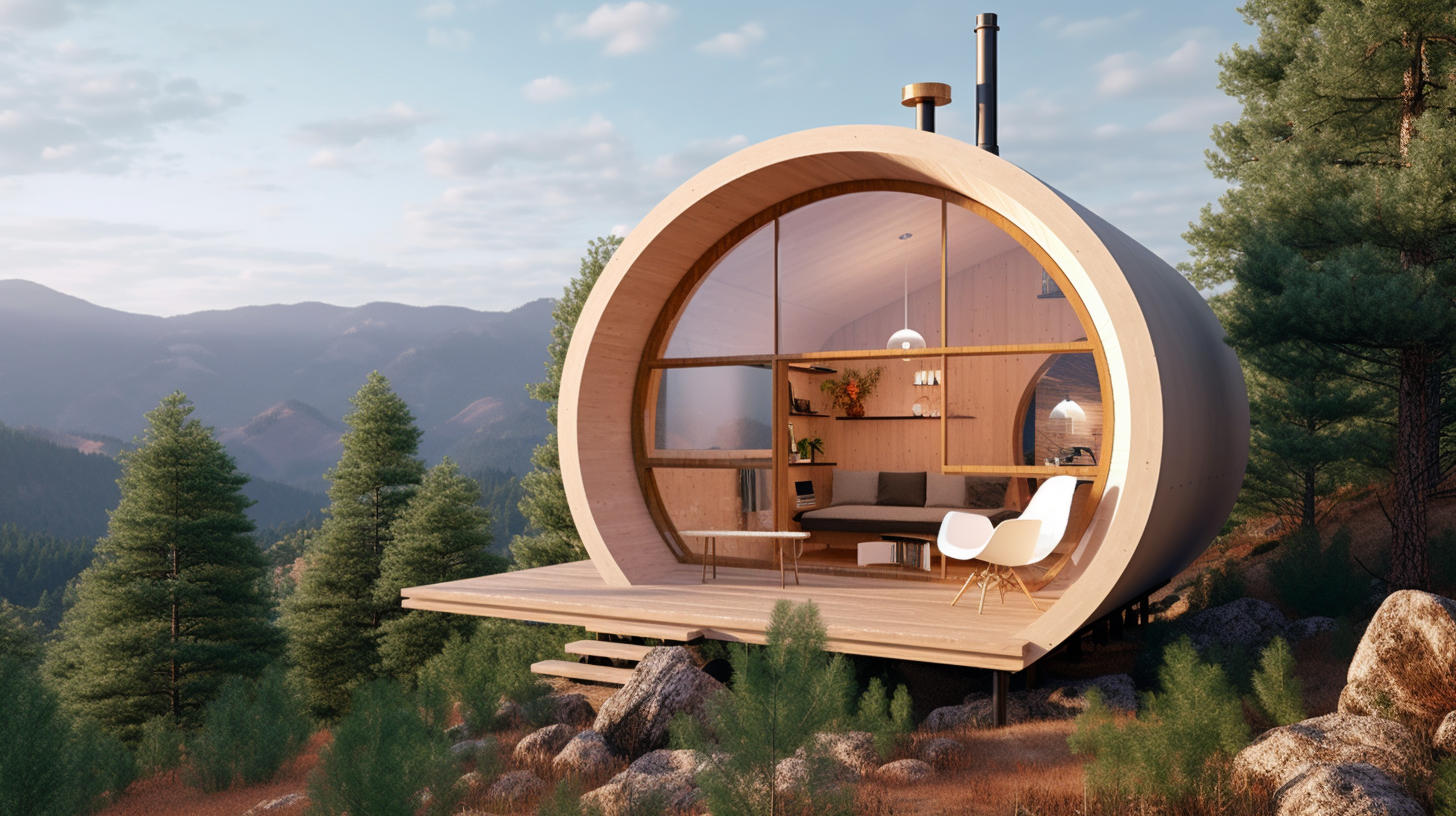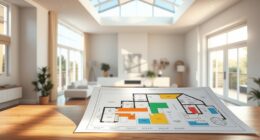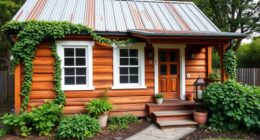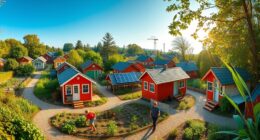I have always been intrigued by the concept of transforming small spaces into livable homes. When I discovered the idea of converting a clothes rack yard into a tiny house, I was immediately interested.
In this article, I’ll guide you through the process of assessing the space, designing the layout, choosing the right materials, and incorporating space-saving solutions.
Get ready to transform your clothes rack yard into a cozy and practical miniature home. Let’s get started!
Key Takeaways
- Utilize vertical space and clever storage solutions to maximize the use of limited square footage in a tiny house in a clothes rack yard.
- Consider using sustainable materials like bamboo, recycled steel, and straw bales to minimize environmental impact and ensure structural integrity.
- Implement space-saving storage solutions such as vertical shelving units, furniture with built-in storage compartments, and under-bed storage containers.
- Personalize the tiny house by utilizing wall space for personalized gallery walls, adding pops of color and personality, and accessorizing with textiles for comfort and warmth.
Assessing the Space: Understanding the Potential of a Clothes Rack Yard
As I step into the clothes rack yard, I’m amazed by the potential that lies within this small space. When it comes to constructing a tiny house, utilizing vertical space is key.

In a clothes rack yard tiny house, it’s crucial to make the most of the limited square footage available. By incorporating clever storage solutions such as vertical shelving units or hanging racks, you can maximize the use of the space and keep your belongings organized.
Additionally, outdoor living is an essential aspect of a clothes rack yard tiny house. Creating functional outdoor areas, such as a small patio or a rooftop garden, allows you to extend your living space and enjoy the fresh air.
Designing the Layout: Maximizing Functionality in a Tiny House
When designing the layout of my tiny house, I wanted to maximize functionality by carefully considering the placement of each element. Optimizing furniture was crucial in order to make the most of the limited space. I chose multi-functional pieces that served multiple purposes, such as a sofa that could also be transformed into a bed, or a dining table that could double as a workspace. This allowed me to have all the necessary furniture without sacrificing space.
Additionally, utilizing vertical space was essential in creating a practical tiny house layout. I installed shelves and cabinets that reached up to the ceiling, making use of every inch of available space. I also utilized wall-mounted organizers and hooks to hang items and keep them off the floor. By thinking creatively and finding innovative storage solutions, I was able to make the most of the vertical space and keep my tiny house organized and clutter-free.
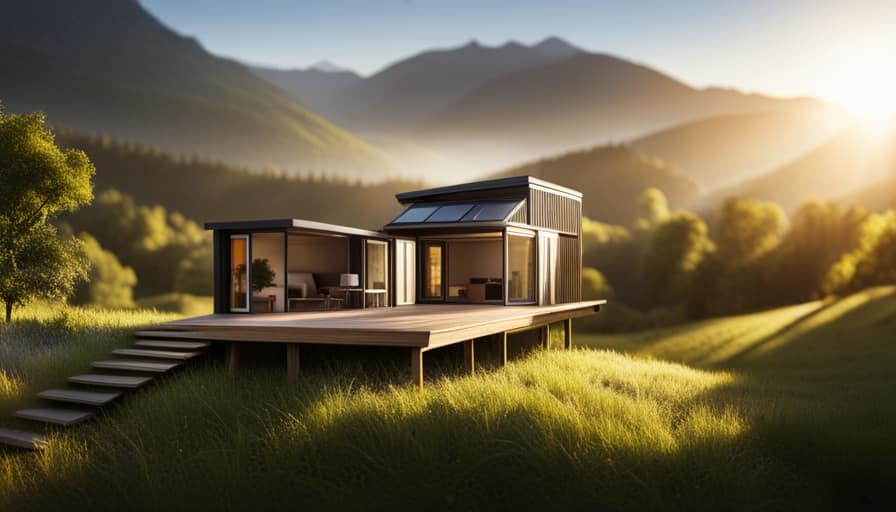
Choosing the Right Materials: Building a Sturdy and Sustainable Miniature Home
I can choose the right materials to build a sturdy and sustainable miniature home. When it comes to sustainable construction and using eco-friendly materials, there are several options to consider. Here is a table that outlines three materials that are both durable and environmentally friendly:
| Material | Description | Benefits |
|---|---|---|
| Bamboo | A fast-growing grass that is strong and versatile. | Renewable resource, high strength-to-weight ratio, natural beauty. |
| Recycled Steel | Steel made from recycled materials, reducing the need for new production. | Durable, fire-resistant, recyclable. |
| Straw Bales | Bales made from agricultural waste, providing excellent insulation. | Renewable, affordable, energy-efficient. |
Choosing these materials not only ensures the structural integrity of your miniature home but also minimizes your environmental impact. By incorporating sustainable construction practices and using eco-friendly materials, you can create a space that is both functional and environmentally responsible. With the right materials, you can build a sturdy and sustainable miniature home that will stand the test of time.
Now, let’s explore space-saving solutions and clever storage ideas for a clothes rack yard tiny house.
Space-Saving Solutions: Clever Storage Ideas for a Clothes Rack Yard Tiny House
With limited space in my clothes rack yard tiny house, I can utilize clever storage ideas to maximize the available area. Space saving tips and organizing hacks are essential for making the most of every nook and cranny in my small living space.

One idea is to use vertical storage solutions, such as installing shelves or hanging baskets on the walls. This allows me to keep items off the floor and free up valuable floor space.
Another clever storage solution is to use furniture with built-in storage compartments, such as ottomans or beds with drawers underneath.
Additionally, I can utilize under-bed storage containers or wall-mounted hooks to hang items like coats or bags.
Adding Personal Touches: Decorating and Making a Clothes Rack Yard Tiny House Feel Like Home
To truly make my clothes rack yard tiny house feel like home, I plan on sprucing it up with some personal touches and adding my own unique style. Here are some decorating ideas and personalization options that can transform a small space into a cozy and inviting home:

-
Utilize wall space: Hang photos, artwork, or shelves to display cherished items and create a personalized gallery wall. This will add visual interest and make the space feel more like your own.
-
Choose colors and patterns: Use paint, wallpaper, or fabric to add pops of color and personality to your tiny house. Incorporate patterns and textures that reflect your personal style and make the space feel vibrant.
-
Accessorize with textiles: Add comfort and warmth with soft throws, pillows, and rugs. Choose fabrics that you love and that make you feel at ease, creating a cozy atmosphere in your tiny house.
Frequently Asked Questions
How Much Does It Cost to Build a Tiny House Out of a Clothes Rack Yard?
To build a tiny house out of a clothes rack yard, the cost of materials can vary depending on your design and preferences. Additionally, check local zoning restrictions to ensure you comply with regulations.
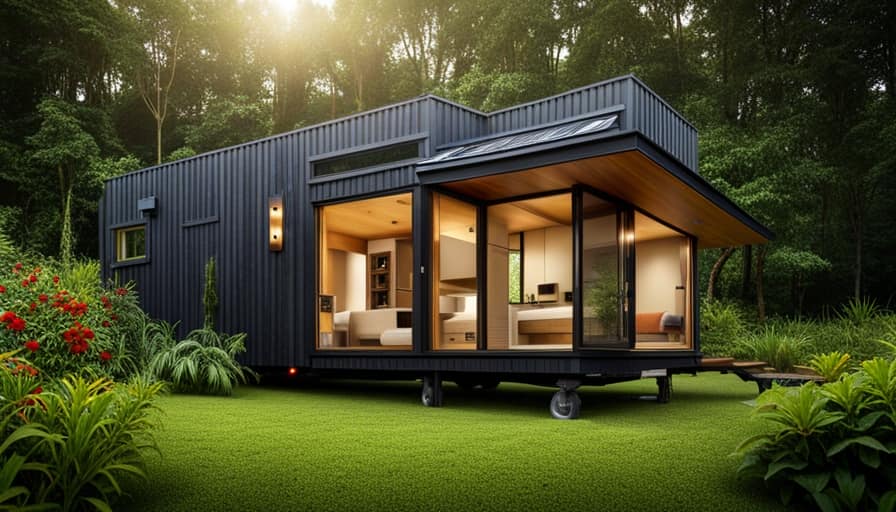
What Are the Legal Requirements and Permits Needed to Build a Tiny House in a Clothes Rack Yard?
Legal requirements and permits needed to build a tiny house in a clothes rack yard vary by location. Contact your local zoning department to determine if it’s allowed and what regulations you need to follow.
Can a Tiny House Built in a Clothes Rack Yard Be Relocated Easily?
Relocating a tiny house from a clothes rack yard can pose challenges, but it’s doable. The benefits of using a clothes rack yard include affordability and convenience. Planning ahead and hiring professionals can make the process easier.
Can I Live in a Tiny House Built in a Clothes Rack Yard Full-Time?
Living full time in a clothes rack yard tiny house has its benefits. It offers affordability, simplicity, and a minimalistic lifestyle. However, ensuring the house is properly secured and easily movable is important for long term living.
How Long Does It Take to Construct a Tiny House Using a Clothes Rack Yard as a Base?
Constructing a tiny house using a clothes rack yard as a base requires careful planning, cost estimation, and resource management. The time required for construction depends on factors such as the complexity of design, availability of materials, and the skill level of the builder.
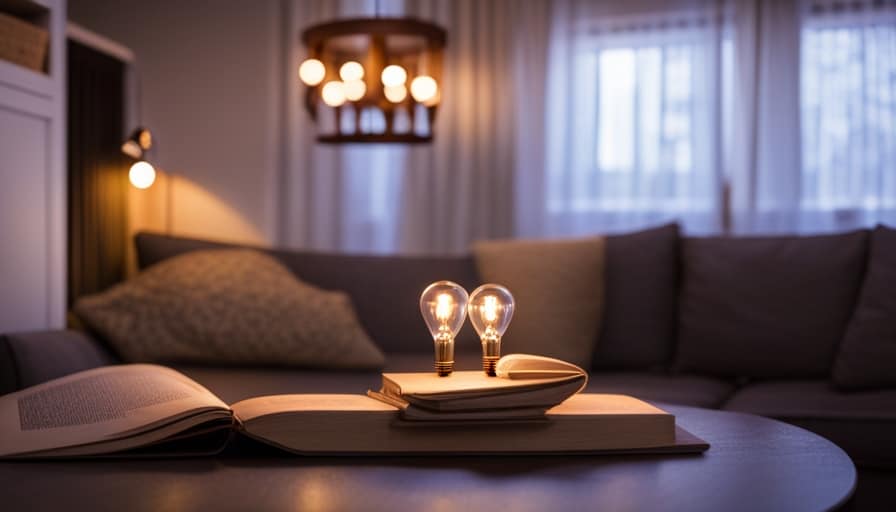
Conclusion
In conclusion, transforming a clothes rack yard into a tiny house is an exciting and challenging project.
By assessing the space, designing a functional layout, choosing the right materials, and implementing space-saving solutions, you can create a cozy and sustainable miniature home.
Adding personal touches with decorations will make it feel like home.
Just like how a wardrobe can hold a multitude of clothes, a clothes rack yard can hold endless possibilities for a unique and efficient living space.
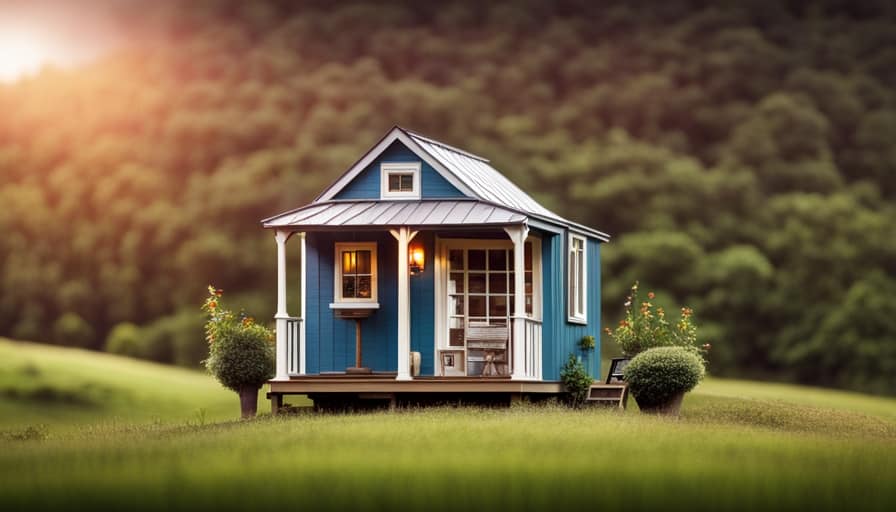
I’m Theodore, and I love tiny houses. In fact, I’m the author of Tiny House 43, a book about tiny houses that are also tree houses. I think they’re magical places where imaginations can run wild and adventures are just waiting to happen.
While tree houses are often associated with childhood, they can be the perfect adult retreat. They offer a cozy space to relax and unwind, surrounded by nature. And since they’re typically built on stilts or raised platforms, they offer stunning views that traditional homes simply can’t match.
If you’re looking for a unique and romantic getaway, a tree house tiny house might just be the perfect option.

